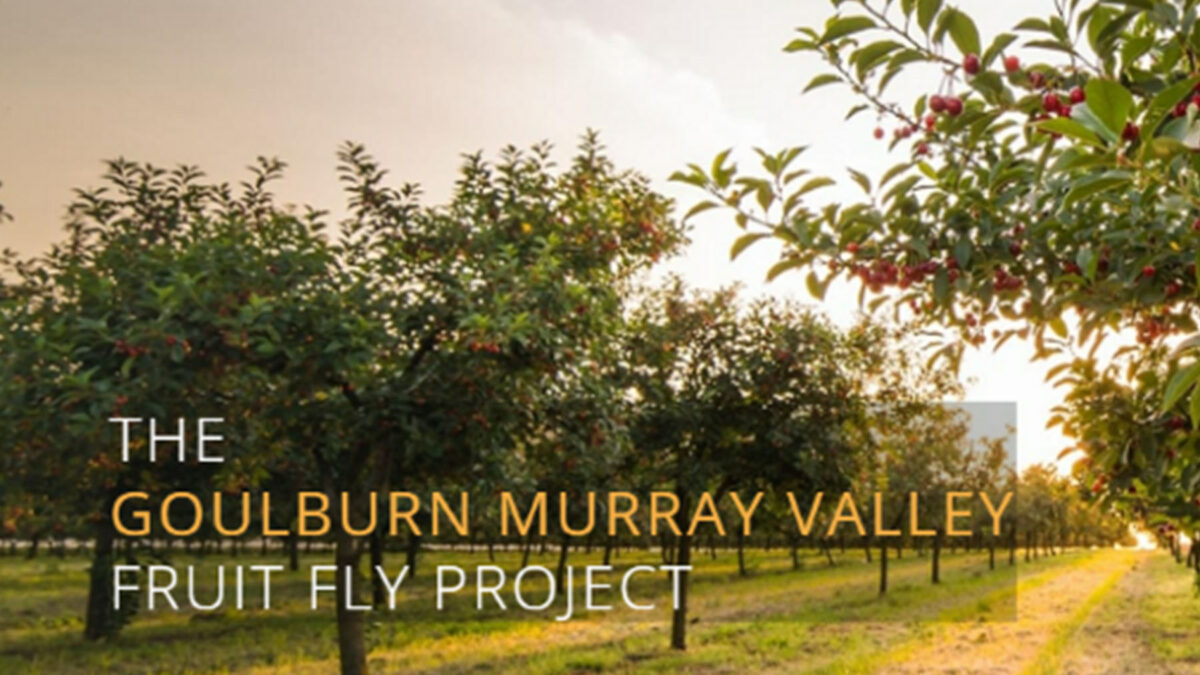Community engagement is key
Managing fruit fly is a complex process. On one hand are the often-immense technical aspects of understanding and controlling it. Conversely, there is a human element, which has been said to be more unpredictable and problematic than the pest to be managed.
With this in mind, it is important to consider the human aspects of fruit fly management, in particular how to amplify response messaging and how to foster positive behaviours on a broad scale.
The technique of area wide management places particular importance on the engagement of the community and the many components which make up the community and is one example of the tools and approaches being used in fruit fly management.
The Goulburn Murray Valley Fruit Fly Area Wide Management (GMVFFAWM) Project, funded by the Victorian Government through the Managing Fruit Fly in Victoria Regional Grants program, was recently recognised for its positive influence at Hort Connections with the Visy Industry Impact Award. This adds to their impressive awards collection to date including the community category of the 2021 Australian Biosecurity Awards. On the back of this great recognition, Plant Health Australia took the opportunity to speak with the programs Fruit Fly Coordinator Ross Abberfield to discuss more about their experience.
According to Ross, a key facet which helps their program to stand out is “being able to coordinate and leverage volunteer resources in the community and direct their energies into fruit fly management activities, and this pool of volunteers helps us to address any potential deficit of labour resources at the local level and increases the total resources available considerably.”
Ross also noted that having a pool of volunteers helps to reduce local response times and knowledge, and helps to increase collaboration across government, industry, and community locally. Local volunteers who are engaged and understand the issues can also help facilitate and promote engagement with various agencies, experts and other “non-locals”.
When asked about what makes their program successful, Ross re-emphasised the important need for collaboration. “Addressing and fostering collaboration is the basis for the program. Internally a collaborative governance group has helped to drive a united approach to the issue and this in turn has helped to support collaborative efforts with other sectors of the community”. Ross also highlighted the importance of constant communication at all levels from one-on-one discussions in the paddock through to workshops, townhall meetings, and communication channels such as radio, TV, and digital platforms. Providing updates and real time information from local trapping grid networks and pest pressure forecasts helps to maintain interest and helps to drive ownership of the issues.
The accolades received by the project have been well deserved recognition of the programs volunteers but have also helped to amplify the messaging around fruit fly management and to support the communications efforts by broadening exposure of the program and the successes that they have enjoyed, and which may be emulated elsewhere.
In the coming months we will bring you more stories about community fruit fly initiatives but in the meantime, we encourage you to explore both the GMV Fruit Fly website and the Area Wide Management websites. Both of which have a wealth of information about community engagement and Area Wide Management of Fruit Fly.
